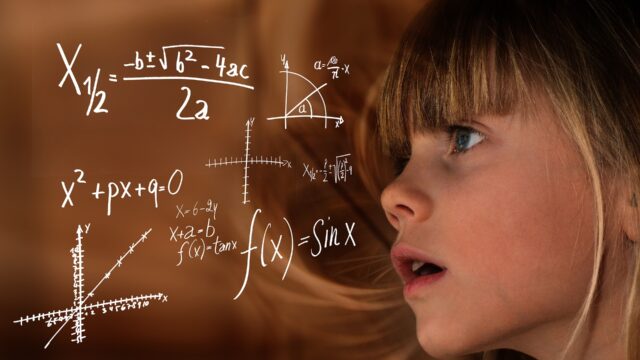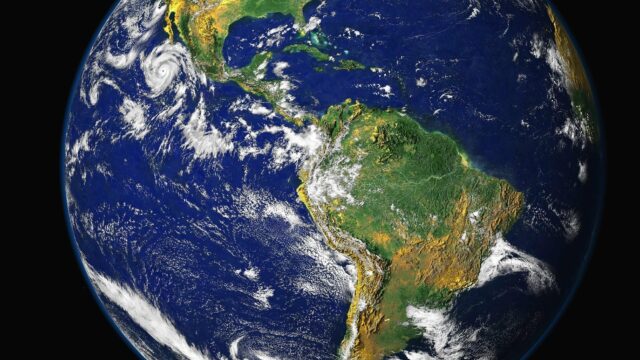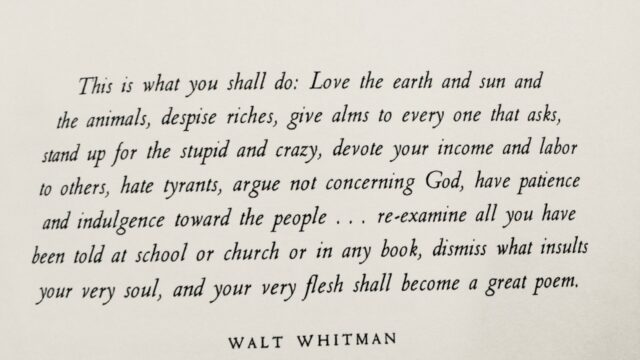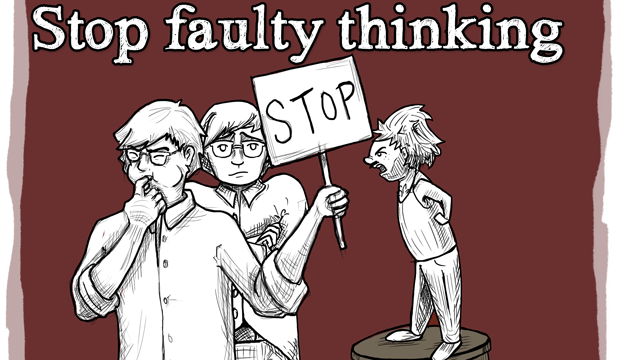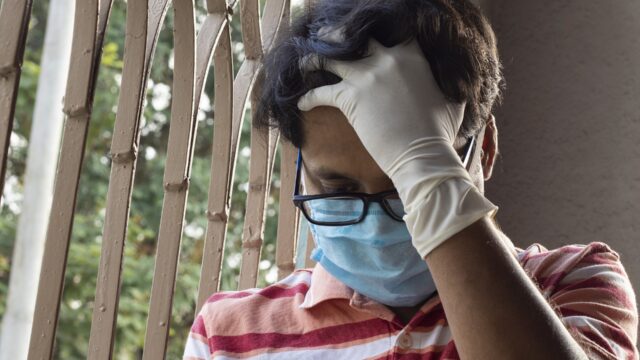I wish to be relevant. I do not want my ashes In the dustbin of history. It is a terrifying thought. To be invisible, To be irrelevant, Unable to add To the human enterprise. In the midst of a pandemic, This consuming hunger And accompanying fear Is exposed. As I shelter at home And avoid the world, I feel less able to add To the human existence. The existential crisis grows. My insignificance is clear. I have no ground to stand on And I disappear. Then, out of the ashes Something new is reborn. With a new relevancy The relevancy of being. Nothing to do, Nothing to be, No more, No less.
Author: japineda
Did God Have Any Choice In Creating The Universe?
“Let there be light,” God said in Genesis 1:3.
Albert Einstein framed the question that is the title of this essay. Another way to ask it is whether nature had any choice regarding the fundamental principles it exhibits? As a non-expert, I consider the laws of physics similar to the Ten Commandments. I see them as rules determining the behavior of matter imposed by the Creator of the universe. This, however, is a more theological than an objective viewpoint.
A more scientific perspective is to view the laws of physics as human inventions, i.e., mathematical formulas that quantitatively define the results of observations and measurements. It’s relevant to underscore that such laws are not built into the structure of the universe and that physicists are not just discovering them. Rather, these principles fall out of the models and parameters physicists develop to describe the observations. Unfortunately, these patterns do not explain why nature is so predictable, instead of chaotic and unpredictable? And why these laws are similar under unique conditions?
The latter question is actually easier to answer than the former. From the beginning, scientists agreed that these laws of nature were free from any type of frame of reference, a proposition called the “principle of covariance.” This was not a choice, but the result of the modeling. We now understand that this neutrality arises from space-time coordinate independence; Meaning that all the fundamental physics follow from the principle of point-of-view invariance. Recall, for example, that light travels at the same speed regardless of the observer’s perspective.
The present Standard Model of particle physics assumes the existence of six “flavors” of quarks, three “generations” of neutrinos, and one Higgs particle. This model comes with 19 constants of nature — numbers such as the mass and charge of the electron — that are measured in experiments. These are the basic parameters of the universe, although translating this design into reality remains riddled with disunions, holes and inconsistencies. Instead of the model producing a single solution, or one unique universe, a slew of solutions or universes exist. It is analogous to having a 26-letter vocabulary that can produce an infinite number of words.
The question that arises is, if our world is but one of many, how do we explain the alternatives? From a quantum physics perspective, these alternatives are considered “probabilities.” String theory (or M-theory) is, at this moment, the dominant and most consistent candidate for a theory of everything, including these alternative probabilities. String theory, offered in 1995 by the physicist Edward Witten, presupposes that gravitons, electrons, photons and everything else, are not point-particles. Instead, they exist as tiny ribbons of energy, or “strings,” that vibrate in singular ways. M-theory can describe all nature particles and forces, including gravity, while obeying the strict logical rules of quantum mechanics and relativity. The problem is that no empirical evidence for M-theory exists.
Robbert Dijkgraaf, Director of the Institute for Advanced Study in Princeton, New Jersey, has recently stated: “By shaking the universe hard enough, we would be able to move from one possible world to another, changing what we consider the immutable laws of nature and the special combination of elemental particles that make up reality.” What this points to is that thinking of physics in terms of fundamental building blocks may be inaccurate, or at least of limited usefulness. Instead, what Dijkgraaf proposes as a solution is to consider an immense “landscape” that connects every instantiation of solutions or universes. Consider, if you will, maneuvering through a myriad of islands in a vast ocean. Below the surface, these “independent” reefs are outcroppings of an extensive and interconnected mountain range.
The principles of nature, or the specifications applied to interpret our measurements, may be accidental, or local to our environment (at least our part of the Universe). They are neither dictated by any universal principle, and not generic or required. Another way to view this is to consider that the laws of physics appear in space and time as resolving uncertainty. Resolution of ambiguity is “information” – one that is circumstance- and location-dependent. Without such contextually dependent information, organic existence as we recognize it in our world should not have occurred. It is also why such life is unique.
Attuned to the Rhythms of Earth
I see myself as an intelligent and curious person. But I plead ignorance in knowing Earth as a planet, complex ecosystem, and celestial home. Scientists estimate the Earth to be 4.54 billion years old, so there is a lot to know. To begin, our first human ancestors appeared only five to seven million years ago, a mere blink of an eye. Thus, for at least four billion years (that’s FOUR one-thousand million years), there were no humans roaming the planet. It was not, however, a tranquil time.
Geologic time scale divides Earth’s lengthy history into four eons, the broadest category of geological time. The first division is called the Hadean eon, when the Earth and moon formed. Hadean comes from the word Hades, the Greek god of the underworld, and the underworld itself. It alludes to the hellish conditions prevailing on Earth at the time. The planet was brand new and still boiling owing to its recent accumulation of matter. There was an abundance of short-lived radioactive elements in the atmosphere, and frequent collisions with asteroids, meteorites, and other elements of the early Solar System. The hellish Hadean eon lasted 600 million years.
From around 4 to about 2.5 billion years ago, the Earth cooled and calmed itself enough for continents to form and for the earliest known life to emerge. These life forms were microbes found in hydrothermal vents. This constituted the second eon, the Archean. The word “Archean” comes from the ancient Greek word Αρχή (Arkhē), meaning “beginning or origin.” During this time, tiny organisms known as cyanobacteria, or blue-green algae, developed photosynthesis: using sunshine, water and carbon dioxide to produce carbohydrates and oxygen.
For the following 2.5 billion years of the Proterozoic eon, the third major geological time epoch, oxygen generated by cyanobacteria accumulated to comprise 21% of the atmosphere. The name Proterozoic is a mixture of the Greek words: protero- meaning “former, earlier”, and – zoe meaning “life”. The accumulation of oxygen in the atmosphere changed the Earth’s atmosphere from a weakly reducing atmosphere to an oxidizing atmosphere. This produced the Great Oxidation Event (GOE), causing many existing species on Earth to die out. As oxygen built up, anaerobic bacteria died leading to the Earth’s first mass extinction. Today, all plants incorporate cyanobacteria (or chloroplasts) to do their photosynthesis for them. The ability to breathe oxygen allowed organisms to become much more active, and much larger. They grew from simple multicellular organisms to a multiplicity of more intricate structures as plants and animals, from sponges and worms to fish and humans. The Proterozoic eon lasted two billion years, starting 2.5 billion years to 541 million years ago.
The first three eons (Hadean, Archean, and Proterozoic) are knowns as the Precambrian age, representing over 80 percent of the overall geologic record. Then, in the following 541 million years, an explosion in the diversification of multicellular animal and plant life forms took place. Scientists describe this explosion of life as the Cambrian period. It starts with the presence of hard animal shells in the fossil record and lasts to the present. This is the Phanerozoic eon during which all major animal species started appearing in the fossil record.
At the tail end of this flourishing Cambrian period, we appeared, or at least our human ancestors. These were apelike creatures in Africa who walked on two legs. They appeared 5-7 million years ago, while only 1.8 million years ago do we begin to see the appearance of the genus Homo, our direct ancestors. It is easy, therefore, to forget and overlook the fact that humans are a recent addition to the animal diversity on this planet. This is even more surprising given the negative, calamitous, and disruptive forces we have unleashed that have affected the planet. In fact, scientists argue that we have crossed a threshold and our presence has created a new geologic force as powerful as the forces that shaped continents and propelled the evolution of species. The ongoing debate is whether we can claim to be in a new “Anthropocene” time (or “age of humanity”) or “Sapiezoic” eon (“age of wisdom”—a name suggested by David Grinspoon).
The pro-argument is that there is something unique that distinguishes humans from other world-changing organisms, and hence worthy of a new eon. This is our unique sociability. Communicating, planning and working in large social groups have allowed us to leverage knowledge and energies to change the world. We have discovered how to transmit this knowledge from generation to generation, accumulate it, and extract novel ideas to further the environmental changes. But beyond this power of the aggregate, humans, unlike other animals and non-organic processes, have a unique sense of self-awareness. That is, we are aware of what we are doing. This is new.
Saying that current human self-awareness is mature enough to serve the good of the planet would be premature. Our awareness is still dim and unfocused, but we are making progress. It is not farfetched to imagine human civilization becoming integrated into the cyclic functioning of planet Earth and becoming sustainable. This is the foundation for the environmental movement. It implies, however, a different mode of interaction with the planet than is being exhibited by our current “intelligent” behavior.
Amidst the turbulence, violence, and futility of a world we appear unable to control, there is a rising hopefulness. Humans are not separate from nature, and what many people have sensed is an awakening and a developing awareness that may in fact be nature itself becoming self-aware. Like the melody of a Mozart concerto that is so basic, so simple, so beautiful, this wakefulness floats over the unstable foundation of the world we experience. You can sense it if you listen attentively. The feeling becomes clearer and penetrating when the mind is quiet. It is then that one can sense a stillness pervading nature that voices strength, resilience, optimism, and contentment. This quiet but dynamic energy brings an understanding that it is always there when needed. “I am here,” it whispers in a firm and loving way. It is time for us to synchronize with that energy. To become attuned to such whispers.
What Shall I Do?
Like many of you, I condemn racism and other inappropriate behaviors. I wish to change society to make such practices fading memories. We are at a unique point in history that is asking all of us to look at things we normally ignore. More specifically, the light of awareness is being trained on our conduct toward others. Whether as individuals or organizations, what we see in our anger and unjust actions is ugly. And our impulse is to want to change. This may be the right time for all of us to carry out the substantive transformations that are needed.
In this year of Black Lives Matter protests, I would be out with the activists, carrying a sign. Such an action would help me be involved in the movement and supportive of the needed transformation to the system. But this is a unique moment. There is an ongoing medical pandemic with COVID-19. I do not feel safe joining the protestors because of coronavirus fears and because I am part of a vulnerable population. This has made me guilty, creating uncertainty about what to do and yet live an authentic life.
Tapping the wisdom of wiser minds at these moments is helpful. Walt Whitman, America’s poet, in his preface to his love poem to earth and humanity, Leaves of Grass, outlines what an authentic person shall do. After reading Whitman and careful consideration, I recognize that it’s more important to open one’s heart than the physical actions we might take. Therefore, the first thing I am trying to do as I practice social distancing and sheltering at home is to understand what others are sensing and thinking about the problems facing our society. I do that by practicing empathy, by imagining and holding others’ feelings as my own. This exercise has made me understand that even while I am part of a minority, education has given me social privileges I was not conscious of before. I am not, for example, fearful about calling police—a simple yet telling act if you are poor black or brown. That has opened my eyes to the systemic racism and pain being exposed and expressed by our fellow humans It shows why the entire system must adjust.
I know also that I must take this understanding and use it to take part in the one revolutionary practice sanctioned by the state—the right to vote. Very little will change until most of the population links the energy of protests with voting. It would be radical if all the people in the streets turn their action into a vote. Our impulse to change dysfunctional systems is a genuine reflection of what is beneficial to humanity. I hope we can find the proper path in which to express those impulses. We must learn to wield such power and appreciate that with it we can alter the world. This is that moment! We march if we can and vote when we must.
Faulty Thinking and the Trump Administration
We are in an extraordinary historical juncture. There is a current world-wide pandemic causing 150,000 deaths in in the U.S. alone in the last six months. How to act during this scary and turbulent period is self-evident for some but not so obvious to others. How, I ask, can anyone not promote wearing masks and social distancing when these are the strongest defenses we have against the deadly virus? Why does a rational individual, conscious of what a poor decision is, make it anyhow? How can we interpret this degree of ignorance? Or to say it another way: How can we understand faulty thinking?
Consider the efforts of President Trump and the Governor of South Dakota recently. The President refuses to wear a mask in public, and does not promote wearing one, because it makes him appear weak, unmanly, and not in control. He seems to care more about his self-perception rather than the health of the society at large. The evidence is incontrovertible that his selfishness and paucity of empathy explains his faulty judgment. But what explains the actions of the Governor? A Republican, Gov. Kristi Noem is following the lead of the President. While inviting thousands of people to attend the Mt Rushmore celebrations for the 4th of July, she won’t make masks mandatory, nor will she promote social distancing.
As a thoughtful cognitive scientist, I am dismayed and yet fascinated by such wrong-headed and dangerous rationale. Mass gatherings with no social distancing and optional masks inevitably will increase the number of infections and undoubtedly the deaths of some of the attendees. The logic of these leaders may result from a paucity in considering all alternatives, erroneous judgment, or absence of compassion in the face of objective evidence to the contrary.
Psychologists describe a specific cognitive tendency that occurs in individuals called confirmation bias that may explain features of their attitude. Confirmation bias is the tendency to search for, interpret, favor, cherry-pick and recall material that confirms or supports one’s personal opinions or values. Confirmation bias distorts evidence-based decision-making.
Anti-maskers and anti-social distancing folks argue that their essential rights are being abridged during the pandemic: the freedom to associate and to do as they want. In their minds, such basic rights “trump” medical considerations. For me, it’s tantamount to declaring that having a gratifying time is more important than protecting life against a destructive virus. It is hard logic to understand. Since confirmation bias tunes people toward confirming their preexisting convictions, it may explain why it is mainly Republicans that react skeptically to health directives.
Psychologists note that explanations for confirmation bias include wishful thinking and the lessened readiness to process information. Another explanation is that people may consider the cost of being incorrect, rather than responding in an evenhanded, objective manner. These are attributes of President Trump’s and Gov. Noem’s responses.
Confirmation bias leads to “attitude polarization” (when a conflict becomes more severe, even when the parties receive the same evidence), and other such erroneous reasoning. It suggests that faulty thinking promotes more faulty thinking.
In the essay Why Facts Don’t Change Our Minds published in the New Yorker, Elizabeth Kolbert points out the limitations of reason. She shows why sensible folks are often foolish. Kolbert bases her conclusions on the work of cognitive scientists, Hugo Mercier and Dan Sperber. Their argument is an unexpected and fascinating explanation for stupidity. They state that reason is an evolved character, like bipedalism or three-color vision; We developed this trait because of our skill at cooperating; And to work out the dilemmas posed by living in collaborative groups. That is, being stupid is sometimes advantageous. The problem is that often we apply this behavior in the wrong situation.
Mercier and Sperber suggest that a mouse with confirmation bias “bent on confirming its belief that there are no cats around,” would quickly become supper. The human equivalent of this confirmation bias, leading individuals to dismiss evidence of recent or underappreciated threats, is a quality that should have disappeared through evolution. But because it has survived, they explain, it must have some adaptive function. They relate this to our “hyper sociability.” We developed reason, they say, to prevent us from getting screwed by the diverse members of our group.
Sociability is the key to how the human mind functions or malfunctions. We depend on others more than we realize. For most things we need not understand the world to live in it because someone else has understood it and we entrust them to have done it right. Think of how we use devices like our computers, smartphones, etc. without substantial awareness of how they work. We trust those who built these gadgets. Thus, partial, flawed, or “stupid” thinking is irrelevant in such circumstances. It may actually be empowering. But we carry that attitude into other areas of life where it is not a smart thing to do. Politics being one.
As Kolbert says, “If we all now dismiss as unconvincing any information that contradicts our opinion, you get, well, the Trump Administration.”
The Deafening Silence
In this moment of the COVID-19 pandemic, we have, for the most part, voluntarily detached from the sources of our connection to life. These relationships provide the glue that makes us social beings and involve family, friends, and those in the larger community. Circumstances have mandated social isolation for a few weeks. But if such a period is prolonged, the downsides begin to appear. Three months into the pandemic, the deafening silence of social isolation is creating a rising tide of loneliness. Like a slow-motion wave, it is gaining speed and momentum.
Loneliness, according to many psychologists, is not necessarily about being alone. Rather, it is about feeling alone and isolated. Because loneliness is a state of mind, it has straightforward solutions. The question is when and where to apply them. The easiest way to decrease and even end loneliness is to focus on activities that distract. They distract us from the missing social bonds that we ache to experience. Such distractions are effective temporary measures. Inevitably, their therapeutic effect wears off and the loneliness returns. But this gives a glimpse into what can be a more permanent solution. That is, loneliness depends on memories to feed the feeling. We recall the friends and family we miss, the conversations we had that are now nonexistent. And we pine for what those memories conjure up.
The more enduring solution, therefore, is similar to the temporary one but involves returning to a more permanent state of mind. A state where memories are no longer the salient thing. This argument does not suggest eliminating memories; It suggests eliminating their saliency and importance. Notice too that the implication is that this is a more natural state of being. How is this possible? The best way is to make focusing on the present moment a way of life. Practicing this leads to making current experiences more salient compared to past events.
I know this because this practice has an extensive history in the psychological and metaphysical literatures. And we can gauge the practice’s efficacy and effectiveness by studying such literature. For me, the experience is also personal. Reducing the saliency of memories, reduces the loneliness created by longing for the past. To make this a reality, we must persist in the practice. Like other changes in behavior, we need to train the mind until it becomes an automatic response.
What happens when the practice is successful? Most of the time, dwelling on the present means a rising curiosity regarding the world, nature, our bodies. It further means a lessening interest in our inner and deprecating self-talk. This outward curiosity of a child recalls a more natural state that we once experienced. It is a state of mind that wants to know the ‘why’- ness of things. We become absorbed and interested in the smallest and most irrelevant of things. It produces a rise in creative thinking for we recognize that nothing is irrelevant; Everything seems fitting and beautiful. The deafening silence of loneliness becomes the resonant joy of life. It does not mean that loneliness won’t occur and take you by surprise. Instead of dwelling on it, however, the curious, present-focused mind knows what to do and can nip the rising feeling in the bud.
Image by soumen82hazra from Pixabay
Injecting Rationality Into Our Discourse
The covid-19 pandemic has brought to light many deficiencies in our democracy, institutions, leaders, and ourselves. The exposure of such fissures in what make up the fundamental pillars of our lives has been crushing and humbling. It has left our minds aimless and searching for answers. One of the foundational cornerstones exposed as more virtual than actual is our dependence on science and medicine. With no means to combat the coronavirus, no vaccine to inoculate us from its destructive actions, no medicines to withstand the multiple assaults on our body, we have lost confidence. Compounding that is a U.S. leader who rejects or confuses faith in science with faith in magical thinking. To lessen the risk, he advocates using drugs with no efficacy and considered highly dangerous. His lodestar is not science but misplaced hope in superstition and instinct. But gut feelings untested by rational thinking are worse than ineffective, they can be deadly.
What this lack of trust in education and in the scientific method teaches our children undermines the very basis of contemporary living. How are we to fight these changes to our body politic, the environment, and psychological well-being? There are many answers, but for now I concentrate on what academia can do. As part of that community, I would like to know where the wisdom experts are when we need them the most? Where are the clinicians, investigators, educators, schoolteachers who can make the case for why we need to look to science? Where are the cognitive scientists, psychologists, sociologists, philosophers to steer us through these bleak and uncertain times? The world needs them now more than ever.
My call is for them to leave their ivory towers, commune with common folk, and share their insights. It is time to banish the fiction that science cannot mingle with politics. Science, intellectual thinking, and analytic reasoning must undergird policy. Policy should be receptive to alternative ways of discerning, including faith-based approaches. But science has won the right to take a principal role and help us assimilate what we learn. We must encourage citizen-scientists to present the argument to the public, not just to colleagues and not just in specialized periodicals. Further, we cannot support leaders who disdainfully minimize the hard-won fight over illiteracy and magical thinking without a response to reconfirm what we know. We are better off because we pay attention to, assess, and then conclude rather than acting only from instinct.
This response to the anxiety and ambiguity of the moment can only take place one way. When academics shed their cloak of protection from reality and immerse in the free exchange of information using all channels of communication. There is a striking ignorance of what science is and the benefits it provides. We encounter such ignorance in schools, and more so in the dark corners of the internet. It is time to flash the light of awareness and intelligence into this darkness. Everyone trained in science must step up before it’s too late. It is an invitation to arms. The world needs saving and a massive influx of rationality into our discourse would go a long way towards doing that.
The Root of the Root of the Problem
We are momentarily paralyzed deciding how to respond to this moment. Our hearts ache to support the righteousness of the protests and Black Lives Matter. We march alongside the protestors and utter words of support. Yet, we are at a loss as to how to make that support real, substantive, caring, and long-lasting. From lay folks and language experts to professional academics, there is a sense of disconnection and free-floating uncertainty as to what to say, how to explain, and how to respond.
Part of the problem is that we recognize the enormity of what needs to change. That those changes must occur at different levels, from personal to social, from kindergarden to corporate. And this enormity is paralyzing for we recognize that such changes take time, yet we need an immediate response. One solution out of this dilemma is to start with fundamental causes. That is, we must get to the root of the root of the problem. We need to understand what the fundamental motivating force is behind the problem. In this case, knowing the root of systemic racism may help us consider more long-term solutions.
Most of us live creatively and function well in the world. E.E. Cummings expressed this beautifully in the poem I Carry Your Heart with Me. In it he conveys that when we carry the heart of the other, of the world, or of God within our own heart, it becomes “the wonder that’s keeping the stars apart.” But who has not experienced the opposite, the worrying, anxiety, overwhelmed feelings, and seeing no way out of dire circumstances? When the effects of these normal human experiences persist because of events, like the ones we are facing, and they alter our mood, rational deliberation, and behavior, it disrupts the normal flow and joy of living. It disrupts the wonder of life. When this judgment persists and turns unmanageable, it becomes the basis for disorders such autoimmune and emotional disorders, heart problems, addictive behaviors, and suicidal ideation. If the deliberation gets out of control, then psychopathology is the inevitable consequence.
While the pressures of life, such as a medical pandemic and protests against systemic racism, can exacerbate such difficulties, the root of the problem is our anxious, fearful, and uncontrollable mind. Once we understand this root problem, one centered on ego-based thinking, then we must be open to escaping the conundrum and stepping into joyful, creative living. The solutions are easy to understand and available to everyone. Yet, these answers can be the hardest thing for anyone to do, for they call for a genuine change in perception and awareness. These changes start by holding the heart of the other within our own, even if the other is a sadistic policeman who should protect and not hurt us. Gaining knowledge and understanding the problem this way provides insight into our common humanity. It also provides the motivation for the required changes.
The Nature of Creativity
Nature is the subtle, Still, softness in our being. That we relegate to the periphery of life, While a harder self takes center stage. This moment calls for integration, Of divergent aspects of ourselves. When we do, Conscious and non conscious minds Unite and synchronize. Creating a magical moment, A moment in which the world feels right, Justified and beautiful. We might call this a creative moment, For it brings a profound sense of joy.
Unbundling Our Social Contract
As members of society, we have all implicitly agreed to an unwritten contract with the specific community in which we live. This social contract states that we exchange living a semi-secure, semi-livable, semi-carefree existence for turning the other way to how society makes this happen. We turn a blind eye to the gray boundaries in this contract. And it terrifies us that shining a light on these border areas may collapse the entire enterprise. If awareness and sensitivity were to occur, we dread being overwhelmed by the negative forces we imagine surrounding us. One of the very purposes of our social contract is to keep “true” reality hidden from view.
Crime, marriage, food production, and economic development are but four sectors of society. In each, the price we pay for maintaining our safety and happiness is being exposed and challenged. We realize, perhaps for the first time, just how much we have been willing to give up in terms of liberty, safety, and honesty. This unwitting unbundling of our old social contract will prove either too scary or motivate us to undo and revise it.
The advance of technology and video cameras in the hands of everyone in the 21st century makes hiding from the truth an impossible task. And what we are experiencing at the moment, which is having a light shone on it, is the injustice toward minorities by law enforcement. The compact with those who maintain order in society is we will give them power as long as we feel safe. When we don’t feel safe, we challenge the contract. The same could be said for women and the power structure; corporations and the general welfare, etc.
Who doesn’t understand or recognize that George Floyd is not an infrequent occurrence? Cruelty, whether made worse because of race, is the outcome of the power we have handed over to authorities. We expect them to keep us safe from those who interrupt our peaceful existence. The recipients of this heavy-handed method live and remain in those gray borders, so we have ignored them. These George Floyds, we repeat to ourselves, are expendable consequences of maintaining the world safe. Until now. For now, we realize George Floyd is us, and that we are abusing the authority handed over to police. It is not what we expect or yearn for.
This moment feels different. It is another unbundling moment and exposure of a social contract we do not like. But how do we respond? What will resolve the problems? Asking to defund the police is a first step in renegotiating the contract. But before we get there, let’s take a minute to fan the spark bringing us to this unique moment. And that is the awareness of what life is, not what we wish it to be. Videos capture reality, won’t let go, and won’t allow us to avert our eyes. Imagine what is not being captured by video. Many of us, for example, clamor there is a climate crisis, but the rest avert their eyes because it’s too painful to contemplate. Until we all become victims of it. But why wait until these crises are at our doorstep?
Become aware and recognize what is real in contrast to what is imaginary or wished for. Awareness is the light we shine on the gray areas of our lives and leads to unbundling the old, inadequate things, like social contracts. It will also bring with it the needed solutions. It is a matter of trusting ourselves and the intelligence guiding it all. If we become aware and sensitive to our own nature we will discover, to our surprise, that what surrounds us is not a negative, evil thing but a positive, loving force.


